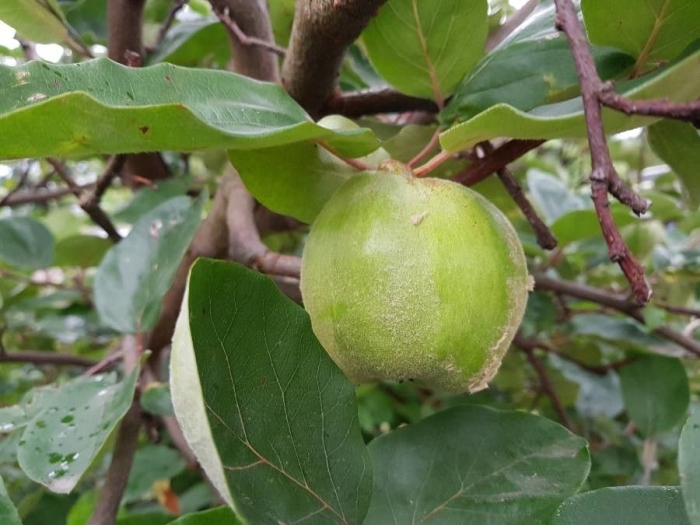Quince
(Cydonia oblonga)
Quince (Cydonia oblonga)
/
/

Ingo Kiess
CC BY-SA 4.0
























































Estimated Native Range
Summary
Quince is valued for its ornamental flowers, fragrant fruit, and minimal maintenance requirements. It is often used in urban plantings, as a border shrub, or for espalier. The plant is hardy and drought-tolerant, adapting to various soils with low to medium pH. It thrives in both shade and sun, although full sunlight is necessary for producing larger flowers and ensuring fruit ripening. Quince is cultivated globally in warm-temperate and temperate climates, requiring a cooler period with temperatures below 7 °C (45 °F) to flower properly. Propagation is typically through cuttings or layering. Fruits are left on the tree to ripen fully and are harvested in late autumn, before the first frosts. In cultivation, quince performs best in full sun or part shade, with medium water requirements, and in soils with fast or medium drainage. While generally robust, quince can occasionally suffer from pests like codling moth or diseases such as fire blight.CC BY-SA 4.0
Plant Description
- Plant Type: Tree, Shrub
- Height: 5-16 feet
- Width: 9-12 feet
- Growth Rate: Slow
- Flower Color: Pink, White
- Flowering Season: Spring
- Leaf Retention: Deciduous
Growth Requirements
- Sun: Full Sun, Part Shade
- Water: Medium
- Drainage: Fast, Medium
Common Uses
Bee Garden, Bird Garden, Butterfly Garden, Edible*Disclaimer: Easyscape's listed plant edibility is for informational use. Always verify the safety and proper identification of any plant before consumption., Fragrant, Showy Flowers
Natural Habitat
Rocky slopes and woodland margins in Western and Central Asia
Other Names
Common Names: Quitte , Quittenbaum , Echte Quitte , Membrillero , Membrillo , Cognassier , Coing , Marmelo , Kvitten , Ajva
Scientific Names: Cydonia oblonga , Cydonia vulgaris , Pyrus cydonia , Pyrus ×malifolia , Cydonia maliformis , Cydonia lusitanica , Cydonia oblonga var. maliformis , Sorbus cydonia , Cydonia communis , Cydonia oblonga f. lusitanica
GBIF Accepted Name: Cydonia oblonga Mill.